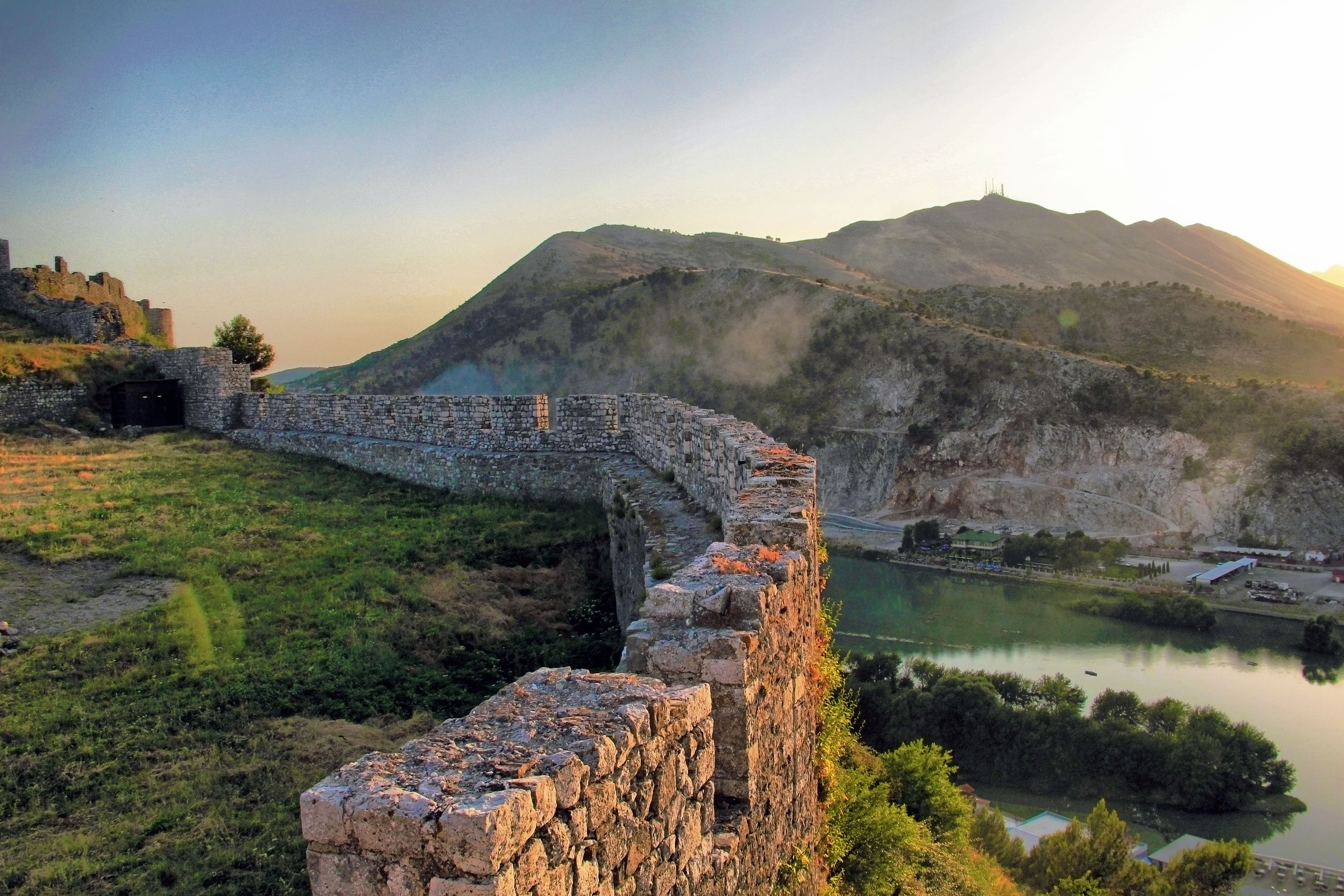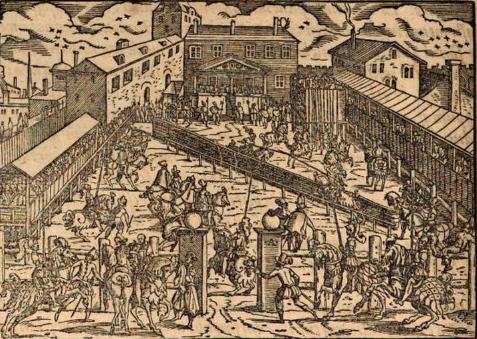|
Drisht
Drisht ( sq-definite, Drishti) is a village, former bishopric and Latin titular see ( Roman Catholic Diocese of Drivasto) with an Ancient and notable medieval history (Latin ''Drivastum,'' Italian ''Drivasto'') in Albania, 6 km from Mesi Bridge (Albanian: ''Ura e Mesit''). It is located in the former municipality Postribë in the Shkodër County. At the 2015 local government reform it became part of the municipality Shkodër. The ruined 13th Century Drisht Castle is on a hilltop 300m above sea level. The ruins of the castle itself contains the remains of 11 houses, and below the ruins of the castle, and above the modern village of Drisht are further archeological remains of late-Roman and medieval Drivastum. Name The name of the settlement was recorded in Latin as ''Drivastum''. Albanian ''Drisht'' derives from ''Drivastum'' through Albanian phonetic changes, however it has been noted that the accentual pattern found in ''Drísht'' < ''Drívastum'' presupposes an "Adriatic ... [...More Info...] [...Related Items...] OR: [Wikipedia] [Google] [Baidu] |
Drisht Castle
Drisht Castle () is a ruined castle above the modern Albanian village of Drisht, medieval Drivastum, in the municipal unit Postribë, Shkodër County, Albania. History The settlement's origins date back to the Roman city of Drivastum. Drivastum was first mentioned as a bishopric at the end of the 10th century. In 1184 the Serbian ruler Stefan Nemanja conquered the city. After the collapse of the Serbian Empire in the second half of the 14th century, Drisht became an independent city which minted its own coins with the inscription ''Civitatis Drivasti''. Between 1369 and 1396 Drisht was ruled by the Balsha noble family, and then by the Republic of Venice. After the city became part of the Ottoman Empire The Ottoman Empire (), also called the Turkish Empire, was an empire, imperial realm that controlled much of Southeast Europe, West Asia, and North Africa from the 14th to early 20th centuries; it also controlled parts of southeastern Centr ... in 1476, the population move ... [...More Info...] [...Related Items...] OR: [Wikipedia] [Google] [Baidu] |
Shkodër
Shkodër ( , ; sq-definite, Shkodra; historically known as Scodra or Scutari) is the List of cities and towns in Albania, fifth-most-populous city of Albania and the seat of Shkodër County and Shkodër Municipality. Shkodër has been List of oldest continuously inhabited cities, continuously inhabited since the Early Bronze Age ( 2250–2000 BC), and has roughly 2,200 years of recorded history. The city sprawls across the Plain of Mbishkodra between the southern part of Lake Skadar, Lake Shkodër and the foothills of the Albanian Alps on the banks of the Buna (Adriatic Sea), Buna, Drin (river), Drin and Kir (river), Kir rivers. Due to its proximity to the Adriatic Sea, Shkodër is affected by a seasonal Mediterranean climate with Continental climate, continental influences. An urban settlement called ''Skodra'' was founded by the Illyrians, Illyrian tribe of Labeatae in the 4th century BCE. It became the capital of the Illyrian kingdom under the Ardiaei and Labeatae and was one ... [...More Info...] [...Related Items...] OR: [Wikipedia] [Google] [Baidu] |
Roman Catholic Diocese Of Drivasto
The Diocese of Drivasto or Diocese of Drivast () was a Roman Catholic bishopric with see in the town of Drivasto (modern day Drisht in Postribë, 16 km north of Scutari, northern Albania) from circa 400 to 1650 and is now a Latin Catholic titular see."Titular Episcopal See of Drivastum" ''GCatholic.org''. Gabriel Chow. Retrieved July 17, 2016 It was suppressed in 1650 (merged into the ) but restored as Latin titular see. History * Established probably in the fifth century (certainly no later than the ninth) as the Diocese of Drivasto (Curiate Italian) / Drisht (Shqipetar) / Drivasten(sis) (Latin), ...[...More Info...] [...Related Items...] OR: [Wikipedia] [Google] [Baidu] |
Mongol Invasion Of Bulgaria And Serbia
During the Mongol invasion of Europe, Mongol '' tumen''s led by Batu Khan and Kadan invaded Serbia and then Bulgaria in the spring of 1242 after defeating the Hungarians at the Battle of Mohi and ravaging the Hungarian regions of Croatia, Dalmatia and Bosnia. Initially, the troops of Kadan moved south along the Adriatic Sea into Serbian territory. Then, turning east, it crossed the centre of the country—plundering as it went—and entered Bulgaria, where it was joined by the rest of the army under Batu. The campaigning in Bulgaria probably happened mainly in the north, where archaeology yields evidence of destruction from this period. The Mongols did, however, cross Bulgaria to attack the Latin Empire to its south before withdrawing completely. Bulgaria was forced to pay tribute to the Mongols, and this continued thereafter. Background Relations between Hungary and Serbia were poor on the eve of the Mongol invasion. The Serbian king, Stefan Vladislav, had married Beloslava, ... [...More Info...] [...Related Items...] OR: [Wikipedia] [Google] [Baidu] |
Postribë
Postribë is a former municipality in the Shkodër County, northwestern Albania. At the 2015 local government reform it became a subdivision of the municipality Shkodër. The population at the 2011 census was 7,069.2011 census results It includes the village of Urë e Shtrenjtë. It contains three Bajraks, those being Boks, Drisht
Drisht ( sq-definite, Drishti) is a village, former bishopric and Latin titular see ( Roman Catholic Diocese of Drivasto) with an Ancient and notable medieval history (Latin ''Drivastum,'' Italian ''Drivasto'') in Albania, 6 km from Mesi Bri ... ...
[...More Info...] [...Related Items...] OR: [Wikipedia] [Google] [Baidu] |
Mesi Bridge
Mesi Bridge (, ) is a bridge in the village of Mes, about northeast of Shkodër, in northwestern Albania. It is a monument of Postribë culture, turning the site into a tourist attraction with a lot of visitors from all around the world. For foreigners the architecture of the bridge is intriguing with round slick stones and stone plates. The surrounding panorama gives the bridge an even more picturesque view. The Albanian Development Fund invested 13 million ALL so the tourists could step on the bridge and watch it closely because there was no entry way to the bridge. It was built in the 18th century, around 1770, by Kara Mahmud Bushati, the local Ottoman pasha, and spans the Kir River. The building was divided in 2 phases where the first phase was only the middle arc and the arc near it and the second phase included the other 11 arches. The purpose was to connect the city of Shkodër with the city of Drisht and other cities of the northern side. It is long, meters wide, m ... [...More Info...] [...Related Items...] OR: [Wikipedia] [Google] [Baidu] |
Skanderbeg
Gjergj Kastrioti (17 January 1468), commonly known as Skanderbeg, was an Albanians, Albanian Albanian nobility, feudal lord and military commander who led Skanderbeg's rebellion, a rebellion against the Ottoman Empire in what is today Albania, North Macedonia, Greece, Kosovo, Montenegro, and Serbia. A member of the noble House of Kastrioti, Kastrioti family, Skanderbeg was sent as a hostage to the Ottoman court. He graduated from the Enderun School and entered the service of the Ottoman sultan Murad II () for the next twenty years. His rise through the ranks culminated in his appointment as of the Sanjak of Dibra in 1440. During the Battle of Nish (1443), Battle of Nish in 1443, he deserted the Ottomans and Liberation of Kruja (1443), became the ruler of Krujë and nearby areas extending from Petrelë to Modrič, Struga, Modrič. In March 1444, he established the League of Lezhë, with support from Albanian nobility, local noblemen, and unified the Albanian principalities. In ... [...More Info...] [...Related Items...] OR: [Wikipedia] [Google] [Baidu] |
Little Tanush
Tanush Dukagjin ( 1423–33), known as Little Tanush, was an Albanian nobleman, a member of the Dukagjini family, the son of Pal Dukagjini (died 1393). He had four brothers: Progon (d. 1394), Pal II (d. 1402), Andrea (d. 1416), and Gjon Dukagjini (d. 1446). In 1398, he surrendered to the Ottomans, but in 1402, after their defeat at Ankara and the capture of Sultan Bayezid I, he freed himself from them. In January 1423, during the Second Scutari War, the Republic of Venice bribed and won over the Pamaliots on Bojana, and then bought over several tribal leader in or near Zeta: the Paštrovići, Gjon Kastrioti (who had extended to the outskirts of Alessio), the Dukagjins, and Koja Zaharija. Though none of these were mobilized militarily by Venice, they left the ranks of Lazarević's army, thus became a potential danger to Lazarević. Although Venetian admiral Francesco Bembo offered money to Gjon Kastrioti, Dukagjins and to Koja Zaharija in April 1423 to join the Venetian fo ... [...More Info...] [...Related Items...] OR: [Wikipedia] [Google] [Baidu] |
Serbian Despotate
The Serbian Despotate () was a medieval Serbian state in the first half of the 15th century. Although the Battle of Kosovo in 1389 is mistakenly considered the end of medieval Serbia, the Despotate, a successor of the Serbian Empire and Moravian Serbia, lasted for another sixty years, experiencing a cultural, economic, and political renaissance, especially during the reign of Despot Stefan Lazarević. After the death of Despot Đurađ Branković in 1456, the Despotate continued to exist for another three years before it finally fell under Ottoman rule in 1459. After 1459, political traditions of the Serbian Despotate continued to exist in exile, in the medieval Kingdom of Hungary, with several titular despots of Serbia, who were appointed by kings of Hungary. The last titular Despot of Serbia was Pavle Bakić, who fell in the Battle of Gorjani in 1537. History Origins After Prince Lazar Hrebeljanović was killed in the Battle of Kosovo on June 28, 1389, his young son Stefan ... [...More Info...] [...Related Items...] OR: [Wikipedia] [Google] [Baidu] |
Gojčin Crnojević
Gojčin Crnojević ( sr-cyr, Гојчин Црнојевић, 1398–d. after 1451) was a Lord of Zeta, initially as a vassal of the Serbian Despotate until he revolted against Despot Stefan Lazarević. He disappeared from sources in 1451. Gojčin was the second son of Đurađ Đurašević of the Crnojević noble family. His mother was the daughter of the Albanian nobleman Koja Zaharia of the Zaharia family. His father and uncle Aleksa were the lords of the territory of Paštrovići (Luštica and hills above Kotor and Budva) during the reign of Balša III (r. 1403–1421). His brothers were Đurašin, Stefanica and another one with an unknown name and historical role. He was mentioned for the first time in 1431. He initially had the title of '' knez'', and later '' vojvoda''. In the beginning, he was the leading character among the brothers. The Crnojevići, initially vassals of the Serbian Despotate, revolted against the Despot; Gojčin was particularly participating. He he ... [...More Info...] [...Related Items...] OR: [Wikipedia] [Google] [Baidu] |



